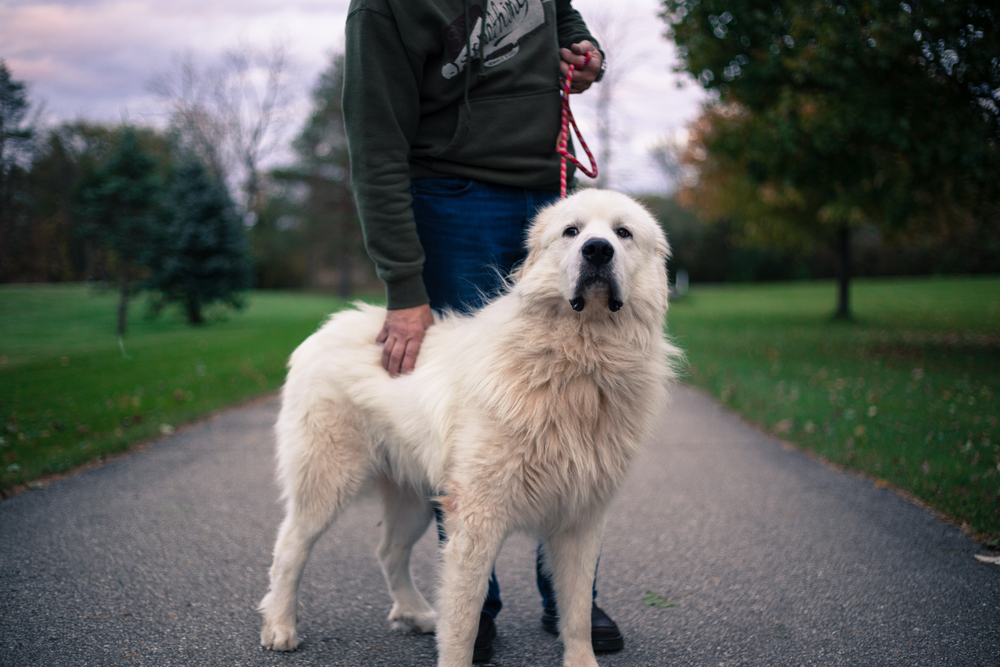
A familiar adage states that a 1-year-old dog is 7 in human years, but unfortunately, that’s an oversimplification of what the science tells us. Depending on the dog’s size, a 16-year-old dog would be roughly 80 in human years.
Remember that, except for large and giant breeds, most canines are sexually mature around 6-9 months old, so saying that every 1 year for dogs equates to 7 human years doesn’t quite compute when it comes to life stage. Much depends on the dog’s lineage, but other factors also influence the equivalent figure.
| Size: | Age in human years: |
| Small breed (<20 lbs): | 80 years |
| Medium breed (21 to 50 lbs): | 87 years |
| Large breed (51 to 100 lbs): | 99 years |
| Giant breed (100+ lbs): | 121 years |
Source: AKC.


How to Calculate Dog Years to Human Years
According to the Centrale Canine, there are 378 dog breeds. They have evolved from being hunting companions, guardians, and herders to fill a broad spectrum of roles. Many people have selectively bred some animals for their looks or conformation. It began in earnest about 160 years ago. This evolution profoundly impacted our pets and their lifespan.
Dogs share a common ancestor with wolves, with the species diverging roughly 27,000 years ago. A high lifespan for a wild canid is about 13 years old, with an average of 5 years. Depending on the subspecies, these animals can range from 50 to 176 pounds, making them a medium, large, or giant breed. That tells us calculating dog to human years has many variables we must take into account.
That also explains why a simple calculation doesn’t work. Small dogs live longer than large canids. Ironically, the latter reaches sexual maturity later than the former. Therefore, size influences age, as one study found.1 Larger canids age quicker than small ones.
Large species like elephants live much longer when we compare them to small creatures. We’re talking about the difference between 65 years and less than one with some mice. Dogs break the mold when we look at finding age equivalents with humans. The takeaway is that a linear relationship between canine and human ages doesn’t exist. Perhaps science can enlighten us.


What’s the Science Behind Dog vs. Human Years?
A team of researchers developed a better way to answer this question that factors in the animal’s aging genetics. Their graph includes human versus dog years and four life stages. They include juvenile, adolescent, mature, and senior. The resulting curve ascends rapidly during the first few years, compensating for the erroneous 7-year calculation with something more realistic.2
The curve also shows noticeable slowing as the dog approaches 4 years old. The lines become blurred at this point. The difference between dog years to humans lessens as it approaches the average lifespan for our pets and people.
Another study sought to quantify an animal’s size on life expectancy. The scientists concluded that every 4.4 pounds of body mass equated to a 1-month reduction of the animal’s lifespan.3 Other research considered the genetic component with the length of the telomeres. These structures are the ends of an organism’s chromosomes. Their demise leads to an increased disease risk and death.4


The Life Stages of a Dog
The American Animal Hospital Association (AAHA) classifies canine life stages as follows:
- Puppy: Birth through growth
- Young adult: Social and physical maturation
- Mature adult: Grown adults until the last 25% of the animal’s lifespan
- Senior: Last 25% of the animal’s life
Keep in mind that a dog’s life stage includes more than just their age. Again, different breeds age at different rates. So, learning more about your dog’s current life stage is most possible at a wellness visit at the vet’s office. Your vet will be able to go over how healthy your dog is for their actual age and where you can make improvements. A visit every 6 to 12 months is ideal so that they can receive regular care and stay up to date with things like vaccine protocols, pest prevention, their body condition score, and more, all of which will affect your dog’s lifespan.


Life Span by Breed Size
| Size: | Average life span: |
| Small breed (<20 lbs or less): | 12–17 years |
| Medium breed (21 to 50 lbs): | 10–13 years |
| Large breed (51 to 100 lbs): | 9–12 years |
| Giant breed (100+ lbs): | 8–10 years |
Source: American Kennel Club


Key Factors That Affect the Dog’s Aging Process
We’ve discussed the effects of size on aging. That explains why a small dog that is 16 years old isn’t as unusual as a giant breed. However, other factors also influence an animal’s lifespan, often products of selective breeding. One of the most compelling effects rests with brachycephalic dog breeds. The term describes pups with short muzzles, which includes favorites like Pugs, French Bulldogs, and Boxers.
While this feature once served an unfortunate purpose, fighting, its presence has far-reaching health impacts. These dogs are vulnerable to many respiratory, cardiovascular, and gastrointestinal conditions that can shorten the pup’s life and compromise the integrity of the data we’ve presented. It adds a wild card to the mix.
Another potential issue is obesity. Nearly 60% of dogs are overweight or obese. It can have severe health complications like cruciate ligament tears, joint problems, pancreatitis, heart conditions, and cancer. Needless to say, you’re unlikely to see an overweight 16-year-old pup.
We can also consider adverse effects on quality of life resulting from behavioral problems and improper socialization. The dog’s DNA might not be the deciding factor. Instead, relinquishment and its sobering consequences may decide the role of the dice.
We discussed a 16-year-old dog being an elderly animal based on the human-age equivalent. Chronic diseases like arthritis may also affect a dog’s lifespan and quality of life in this space. Our pets don’t have the environmental pressure of predation and hunting success like their wild counterparts. However, it brings other health risks, even if they seem favorable on the surface.




Conclusion
A 16-year-old dog has lived a long life to reach this age, and in human years, they are well in their 80s or more. You’re more likely to find a small pup instead of a giant breed having lived this long. However, regardless of what breed you have, it’s important to remember that there are many things that you can do to ensure your dog lives the longest and healthiest life possible for them.
Featured Image Credit: Yobab, Shutterstock



